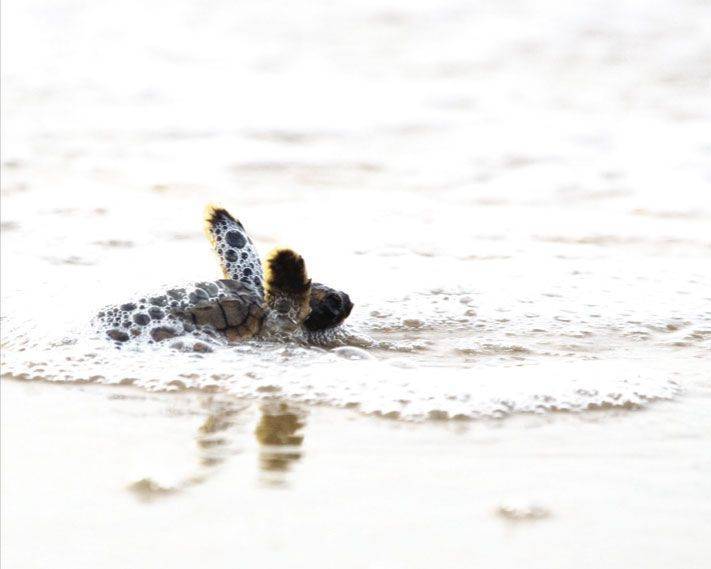[dropcap]A[/dropcap]pril 20, 2014, marks four years since BP’s Macondo well in the Gulf of Mexico blew out, destroying the Deepwater Horizon drilling rig, killing eleven workers and setting off an uncontrolled oil gusher lasting eighty-seven days. By the time the flow was stopped, an estimated two hundred million gallons of oil had entered the Gulf along with almost two millions gallons of chemical dispersants.

Four years later, the oil is not gone — over just a four week period in February 2014, nearly four hundred pounds of tar balls were removed from Alabama beaches. Clearly, the harm to Gulf wildlife and communities will be long-lasting, and the tragedy’s full fall-out will not be known for years.
Still Waiting for Restoration
A recent report by the National Wildlife Federation, “Four Years into the Gulf Oil Disaster: Still Waiting for Restoration”, looks at how fourteen Gulf species are faring in the wake of the disaster. The report catalogues disturbing scientific findings that have emerged in a variety of species from blue crabs and killifish (i.e. cockahoe) to tuna and red snapper, all of which serve as mainstays of the Gulf food web and are important to support the region’s economy.
A few of the report’s key highlights include:
• Oyster recruitment remained low over large areas of the northern Gulf at least through the fall of 2012.
• In 2013, anglers and fishermen in Louisiana, Mississippi, Alabama, and Florida noted a precipitous drop in blue crab populations, and blue crabs were found with lesions and visible infections.
• A 2011-2013 analysis of red snapper populations in the Gulf showed an unusual lack of younger snapper.
• Scientists have found that the oil disaster affected the cellular function of Gulf killifish, which in turn can impact its ability to develop and reproduce.
• A chemical in oil from the Deepwater Horizon spill has been shown to cause irregular heartbeats in bluefin and yellowfin tuna that can lead to heart attacks, or even death.
The Lessons of History
This four-year anniversary comes almost exactly twenty-five years after the Exxon Valdez ran aground in Alaska. As that 1989 tragedy revealed, oil disasters can take years to reveal their full effects, and often recovery remains incomplete after decades. In Alaska’s Prince William Sound, for example, several species have not yet recovered, including Pacific herring and clams, while it took a full twenty-five years for sea otter populations to recover.
Continued Research is Key
NWF’s report confirms that just like the Exxon Valdez tragedy, the BP oil disaster is far from over, and continued research and monitoring are crucial to understanding its full effects on the Gulf ecosystem and its wildlife. Sound science is a key component to develop a comprehensive, ecosystem- wide approach to restoring coastal Alabama and the Gulf – from wetlands and beaches to reefs and deep marine waters.
Science will inform planning efforts, help to identify restoration priorities like habitats and species, and guide short and long-term monitoring. Importantly, science will ensure that the fines and penalties BP and the other companies will pay are invested in smart ecological restoration projects that support local businesses and industries that depend on a healthy coast.
As the tragedy’s impacts to Gulf wildlife and communities continue to emerge in the months and years ahead, science will shape a path toward meaningful restoration and recovery for Alabama and the Gulf Coast.
Find the National Wildlife Federation report, “Four Years into the Gulf Oil Disaster: Still Waiting for Restoration”, online here. Jill Mastrototaro is a Gulf Policy Specialist with the National Wildlife Federation, based in Jackson, Mississippi. In response to the 2010 BP oil disaster, she works in Alabama and Mississippi to ensure meaningful restora- tion of Gulf lands, waters, fisheries, and the communities that depend on them.
